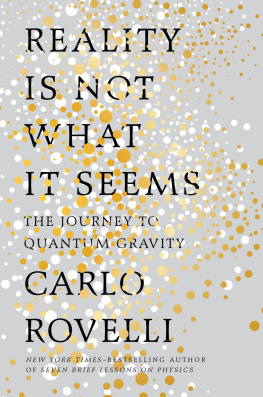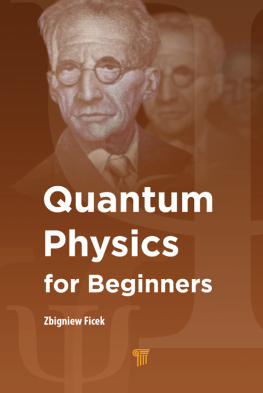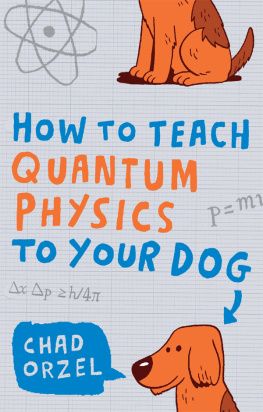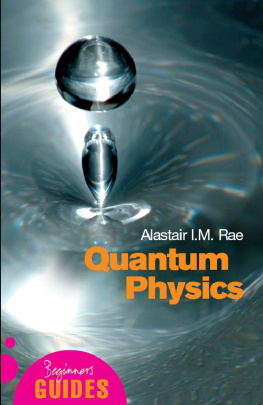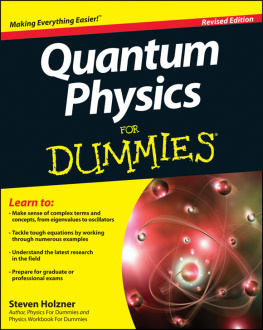Heinz R. Pagels - The Cosmic Code: Quantum Physics as the Language of Nature
Here you can read online Heinz R. Pagels - The Cosmic Code: Quantum Physics as the Language of Nature full text of the book (entire story) in english for free. Download pdf and epub, get meaning, cover and reviews about this ebook. year: 2012, publisher: Courier Corporation, genre: Non-fiction. Description of the work, (preface) as well as reviews are available. Best literature library LitArk.com created for fans of good reading and offers a wide selection of genres:
Romance novel
Science fiction
Adventure
Detective
Science
History
Home and family
Prose
Art
Politics
Computer
Non-fiction
Religion
Business
Children
Humor
Choose a favorite category and find really read worthwhile books. Enjoy immersion in the world of imagination, feel the emotions of the characters or learn something new for yourself, make an fascinating discovery.
- Book:The Cosmic Code: Quantum Physics as the Language of Nature
- Author:
- Publisher:Courier Corporation
- Genre:
- Year:2012
- Rating:5 / 5
- Favourites:Add to favourites
- Your mark:
- 100
- 1
- 2
- 3
- 4
- 5
The Cosmic Code: Quantum Physics as the Language of Nature: summary, description and annotation
We offer to read an annotation, description, summary or preface (depends on what the author of the book "The Cosmic Code: Quantum Physics as the Language of Nature" wrote himself). If you haven't found the necessary information about the book — write in the comments, we will try to find it.
The Cosmic Code: Quantum Physics as the Language of Nature — read online for free the complete book (whole text) full work
Below is the text of the book, divided by pages. System saving the place of the last page read, allows you to conveniently read the book "The Cosmic Code: Quantum Physics as the Language of Nature" online for free, without having to search again every time where you left off. Put a bookmark, and you can go to the page where you finished reading at any time.
Font size:
Interval:
Bookmark:
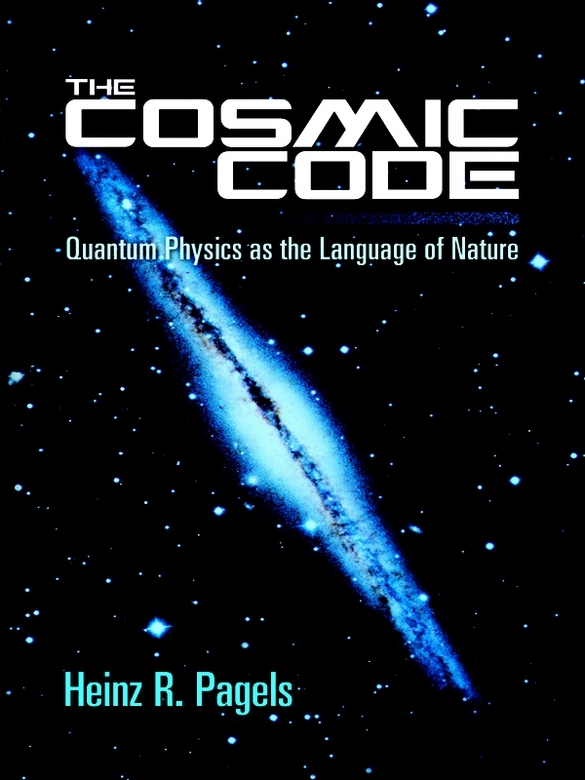
IN November 1977 I attended a symposium at Columbia University to honor Professor Isidor Isaac Rabi, an experimental physicist of the Los Alamos generation, a Nobel laureate, and a statesman of science. He was a founder of Brookhaven National Laboratory and the European Organization for Nuclear Research (CERN). After a day of speeches by his colleagues, Rabi made a few remarks of his own. He chided physicists for failing to bring the excitement of physics to a larger public and said that they had done less than science fiction writers to communicate the spirit of science. Upon hearing his remarks I resolved to write this book a resolution supported by my friend John Brockmans instinct for intellectual excitement. With Johns gentle prodding I wrote a book proposal.
Many people, all friends, have made suggestions regarding style and content which have found their way into the final productKathryn Burkhart, Ashton Carter, Sidney Coleman, Rodney Cool, Gerald Feinberg, Daniel Greenberger, Mark Kac, Tony King, Linda Hess, Emily McCully, Richard Ogust, Hilary Putnam, and especially Eugene Schwartz and Arthur Miller whose criticisms helped me enormously. Many of my views on the problem of quantum reality grew out of delightfully humorous and informative discussions with Nicholas Herbert. I was also fortunate that the writing of this book coincided with the centennial year of Einsteins birth, 1979. In that year I attended three centennial symposia, one held at the Institute for Advanced Study in Princeton, N.J., another in Jerusalem sponsored by the Israeli Academy of Science and the van Leer Foundation, and a third in New York City sponsored by the New York Academy of Sciences. I benefited greatly from lectures at these meetings, especially those by Daniel Bell, Jeremy Bernstein, Erik Erikson, Loren Graham, Gerald Holton, Martin Klein, Arthur Miller, Abraham Pais, Wolfgang Panofsky, Dennis Sciama, Irwin Shapiro, Steven Weinberg, and John Wheeler. Articles by A. Pais and G. Holton on the early work of Einstein were especially useful. The second part of the book has been influenced by U. Amaldis CERN article on accelerators and scientific culture as well as the 1977 Dedalus article of Steven Weinberg. The third part of the book grew out of conversations with my friend Joseph H. Hazen.
It was my good fortune to find Matthew Zimet, who illustrated the book. His novel and humorous drawings do much to ease the burden of the text by delighting mind and eye.
A scientists greatest asset, the ability to concentrate productively on specific problems until they yield, can become a liability when he attempts to communicate his ideas to a nonscientist. Therefore my deepest debt is to my editors, Alice Mayhew and Catherine Shaw, who showed me how such communication was possible without a sacrifice in the clarity or integrity of ideas. If the reader obtains a better view of the forest of physics rather than of the trees, then I owe much to them.
I would like to thank the Aspen Center for Physics for its hospitality during the writing of this book.
Finally I want to thank my wife, Elaine, and my son, Mark, whose loving support made writing less a labor and more a creative challenge.
The reader interested in pursuing some of the material discussed in this book should consult the references below. This bibliography contains but a small portion of the literature on modern physicsit is hardly complete but serves as an introduction. Almost all these books and articles are written by physicists, a fact reflecting my own bias in the selection. Some books, while they may use mathematics, all contain material accessible and of interest to the general reader.
Amaldi, Ugo. Particle Accelerators and Scientific Culture. CERN reprint 79-06, Geneva 1979.
Asimov, Isaac. Science, Numbers and I. Garden City: New York, 1968.
Bernstein, Jeremy. Einstein. New York: Viking Press, 1973.
Bohr, Niels. Atomic Physics and Human Knowledge. New York: John Wiley and Sons, 1958.
Born, Max. The Born-Einstein Letters. New York: Walker and Co., 1971.
Childs, H. An American Genius: The Life of Ernest Orlando Lawrence. New York: Dutton, 1968.
Clark, Ronald W. Einstein, The Life and Times. New York: World Publishing, 1971.
Cline, Barbara L. The Questioners: Physicists and the Quantum Theory. New York: Thomas Y. Crowell, 1973.
Davies, P. C. W. The Forces of Nature. New York: Cambridge University Press, 1979.
. The Physics of Time Asymmetry. Berkeley, California: University of California Press, 1974.
Dirac, P. A. M. The Evolution of the Physicists Picture of Nature. Scientific American, 208, May 1963.
Drell, S. D. When is a Particle. American Journal of Physics, 46, June 1978, p. 597.
Einstein, Albert. Ideas and Opinions. Translated by Sonja Bargmann. New York: Crown Publishers, 1954.
. The Evolution of Physics . With Leopold Infeld. New York: Simon and Schuster, 1938.
Feinberg, Gerald. What is the World Made Of? Atoms, Leptons, Quarks and Other Tantalizing Particles . New York: Doubleday, 1977.
Feynman, R. P.; Leighton, Robert B.; and Sands, Matthew. The Feynman Lectures on Physics . Vols. I, II, III, New York: Addison-Wesley Publishing Co., 1963.
. Structure of the Proton. Science , (1975).
Frank, Philipp. Einstein: His Life and Times . New York: Alfred A. Knopf, 1947.
Gamow, George. One, Two, Three... Infinity . New York: The Viking Press, 1947.
Gell-Mann, M., and Rosenbaum, E. P. Elementary Particles. Scientific American, 197, July 1957.
Glashow, Sheldon. Quarks with Color and Flavor. Scientific American , , No. 4 (1974), p. 38.
Heisenberg, Werner. Physics and Beyond . New York: Harper and Row, 1971.
Hoffmann, Banesh. Albert Einstein, Creator and Rebel. With collaboration of Helen Dukas. New York: The Viking Press, 1972.
. Albert Einstein: The Human Side . With Helen Dukas. Princeton: Princeton University Press, 1979.
Holton, Gerald. Constructing a Theory: Einsteins Model. The American Scholar , Vol. 48, No. 3 (1979).
. Thematic Origins of Scientific Thought: Kepler to Einstein . Cambridge: Harvard University Press, 1973.
. The Scientific Imagination: Case Studies . New York: Cambridge University Press, 1978.
Klein, Martin J. Paul Ehrenfest. Amsterdam: North-Holland; New York: American-Elsevier, 1970.
McMillan, E. Early Accelerators and Their Builders. IEEE Trans. Nuclear Science , 20, June 1973.
Miller, Arthur I. Albert Einsteins Special Theory of Relativity; Emergence (1905) and Early Interpretation (1905-1911). Reading, Massachusetts: Addison-Wesley Publishing Company, 1981.
Pais, Abraham. Einstein and the Quantum Theory. Reviews of Modern Physics , Vol. 51, No. 4 (1979).
Particles and Fields : Readings from Scientific American. With an introduction by William J. Kaufmann III. San Francisco: W. H. Freeman and Co., 1980.
Polkinghorne, J. C. The Particle Play: An Account of the Ultimate Constituents of Matter . San Francisco: W. H. Freeman and Co., 1979.
Rosen, Joe. Symmetry Discovered. New York: Cambridge University Press, 1975.
Schwitters, Roy F. Fundamental Particles with Charm. Scientific American, 237 , No. 4 (1977).
Schilpp, Paul A., ed. Albert Einstein: PhilosopherScientist. Tudor Publishing Co., 1949.
Segre, Emilio. From X-Rays to Quarks, Modern Physicists and Their Discoveries. San Francisco: W. H. Freeman and Co., 1980.
Trefil, James S. From Atoms to Quarks: An Introduction to the Strange World of Particle Physics . New York: Charles Scribners Sons, 1980.
Font size:
Interval:
Bookmark:
Similar books «The Cosmic Code: Quantum Physics as the Language of Nature»
Look at similar books to The Cosmic Code: Quantum Physics as the Language of Nature. We have selected literature similar in name and meaning in the hope of providing readers with more options to find new, interesting, not yet read works.
Discussion, reviews of the book The Cosmic Code: Quantum Physics as the Language of Nature and just readers' own opinions. Leave your comments, write what you think about the work, its meaning or the main characters. Specify what exactly you liked and what you didn't like, and why you think so.




